A healthy mouth is a critical part of your cat’s overall health, but proper feline dental care often gets neglected. In fact, more than 80% of cats who are at least three years old are afflicted with some sort of periodontal disease, according to a study done by the American Veterinary Dental Association. A dental examination at your cat’s annual wellness check-up, along with establishing a regular tooth brushing routine at home, can go a long way in assessing and minimizing problems.
Though there are some problems that may only be discovered with the help of x-rays or the more in-depth examination your cat will get during her annual wellness check-up, there are some red flags to look out for on a day-to-day basis. Schedule an appointment with your veterinarian right away if you notice any of these symptoms, as they can indicate or lead to serious issues like gingivitis, periodontal disease, kidney disease, or stomatitis.
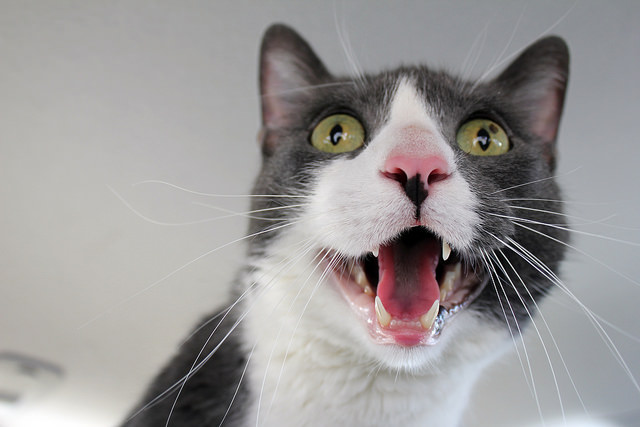
Image Source: Quinn Dombrowski via Flickr.com
1. Bad breath
Your cat’s breath probably doesn’t smell great, but it shouldn’t be offensive. Abnormally strong odors can indicate digestive issues or a problem with your cat’s gums, such as gingivitis.
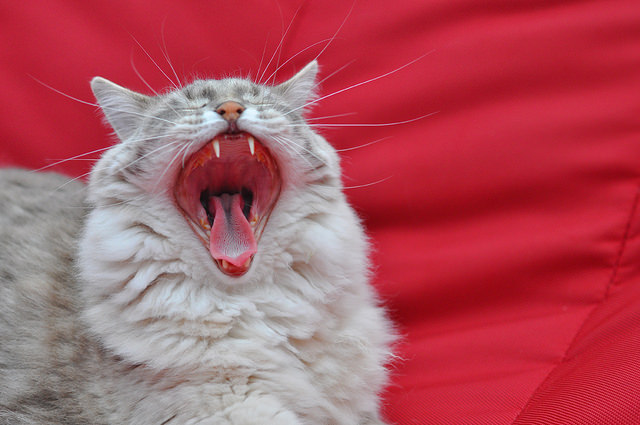
Image Source: Martijn Nijenhuis via Flickr.com
2. Inflamed gums
Swollen gums can be very painful for your cat, possibly even rendering her unable to eat or groom herself. Left untreated, inflamed gums can lead to gum disease and tooth loss.
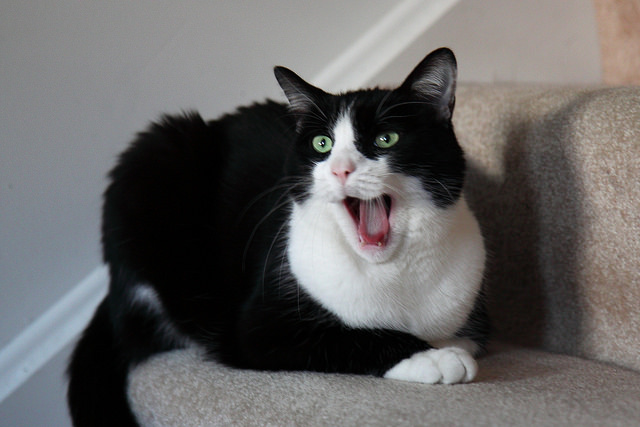
Image Source: Mr.TinDC via Flickr.com
3. Pale or red gums
A healthy cat will have pink gums. Pale gums could indicate anemia or dehydration. Red gums are often inflamed and can indicate periodontal disease.
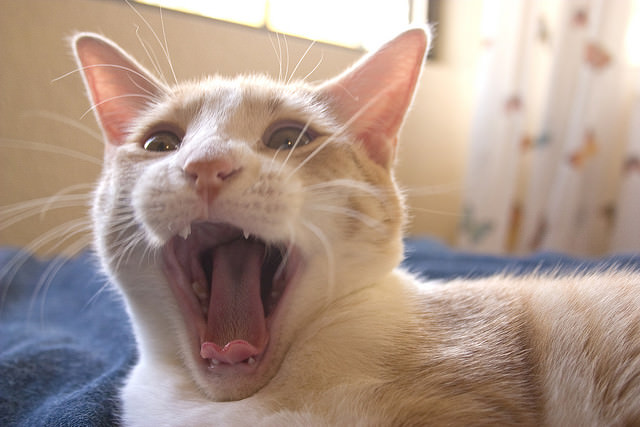
Image Source: Melissa Wiese via Flickr.com
4. Excessive drooling
A little bit of drool is nothing to worry about, but excessive drooling can be an indicator of a number of mouth problems such as abscessed teeth, gum disease, or an ulcer.
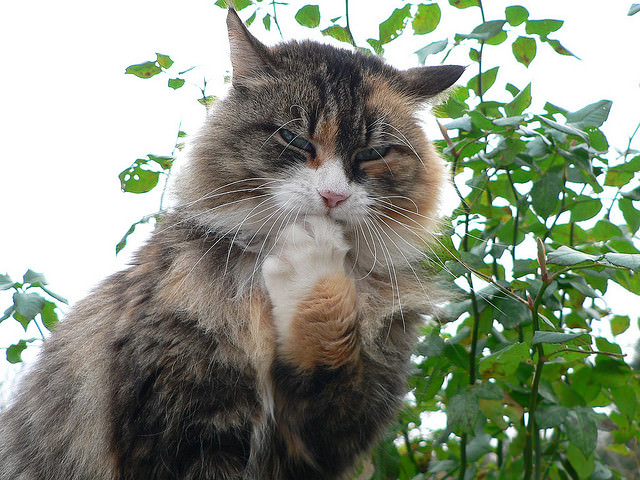
Image Source: foshi via Flickr.com
5. Excessive pawing at the mouth
If your cat is excessively pawing at her mouth, take it as a sign that she’s feeling some sort of oral irritation.
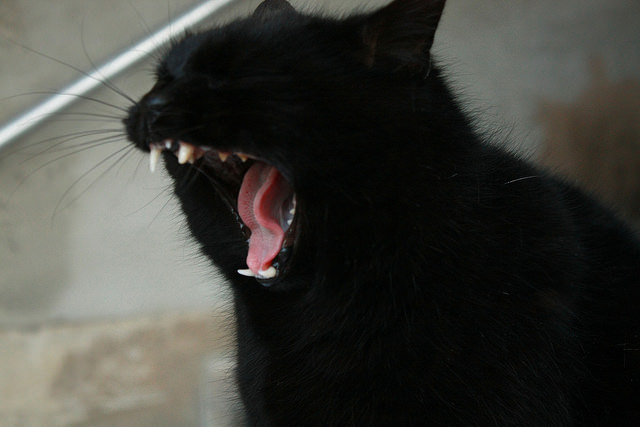
Image Source: Glüh Würmchen via Flickr.com
6. Loose, broken, or cracked teeth
Loose, broken, or cracked teeth can be painful for your cat and may lead to infections if not treated right away.
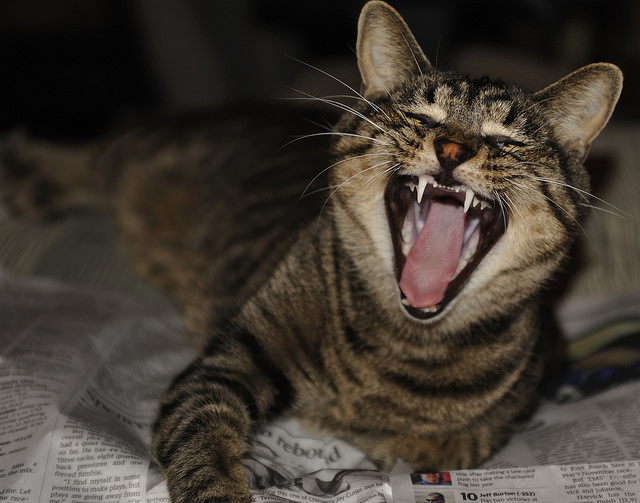
Image Source: Robert W. Howington via Flickr.com
7. Plaque
When plaque hardens, it turns into tartar, which can cause gingivitis. Both plaque and tartar can host bacteria, which can attack your cat’s teeth, gums, and bones. You can remove plaque with regular tooth brushing, but a professional dental cleaning will be necessary once the plaque has hardened to tartar.
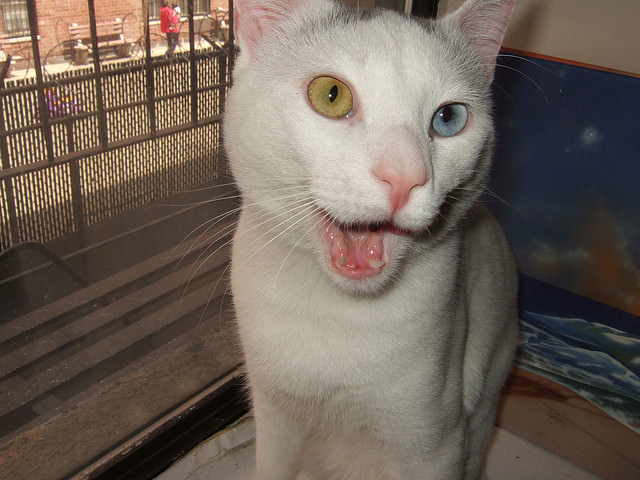
Image Source: Rob DiCaterino via Flickr.com
8. Bleeding
Almost all bleeding is reason for a veterinarian visit, and a bleeding mouth no exception. Blood in your cat’s mouth could indicate a number of problems such as periodontal disease, an abscessed tooth, or a tumor.
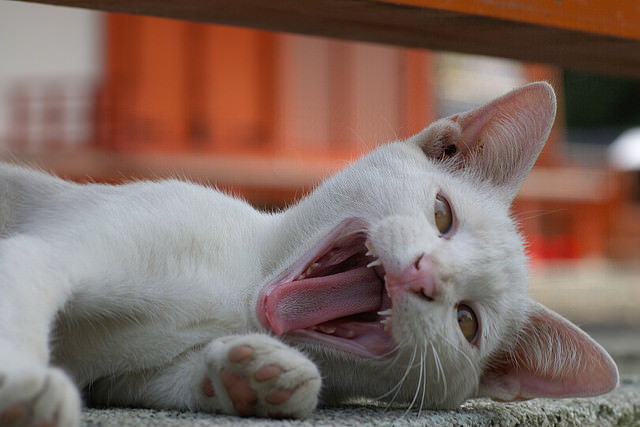
Image Source: masatsu via Flickr.com
9. Lumps or growths
Lumps or growths could be benign or serious. The only way you’ll know for sure is to see your veterinarian, who will likely perform a biopsy or other tests.

